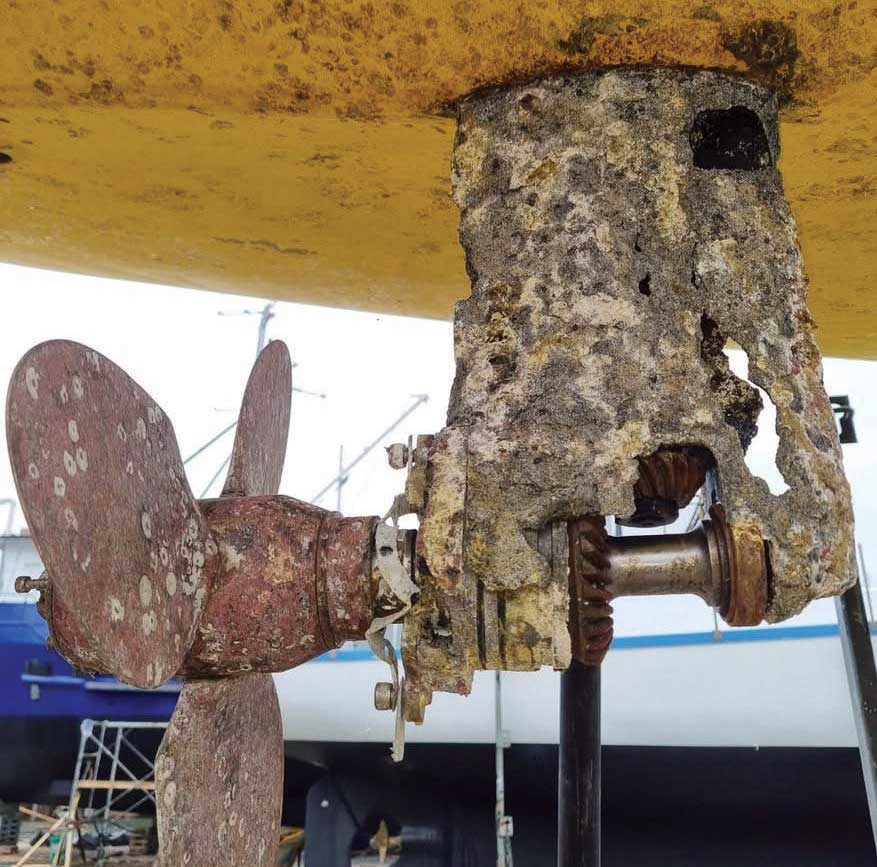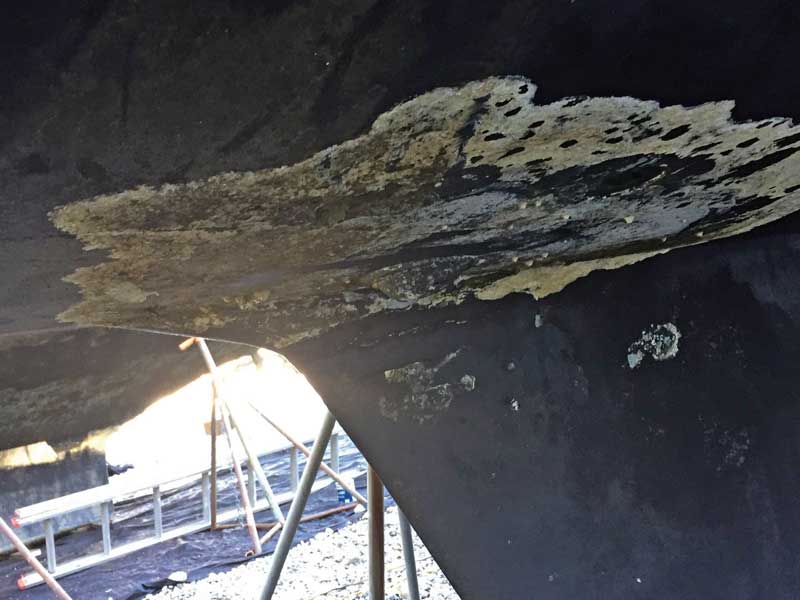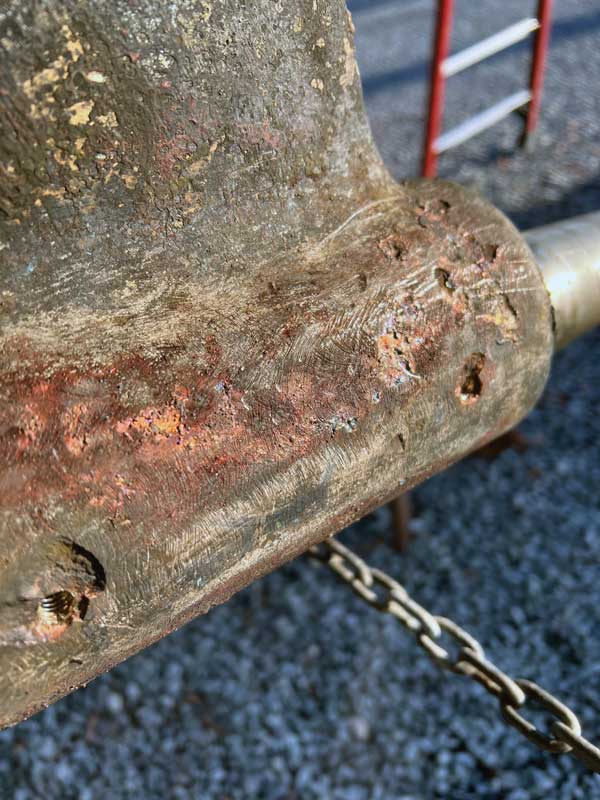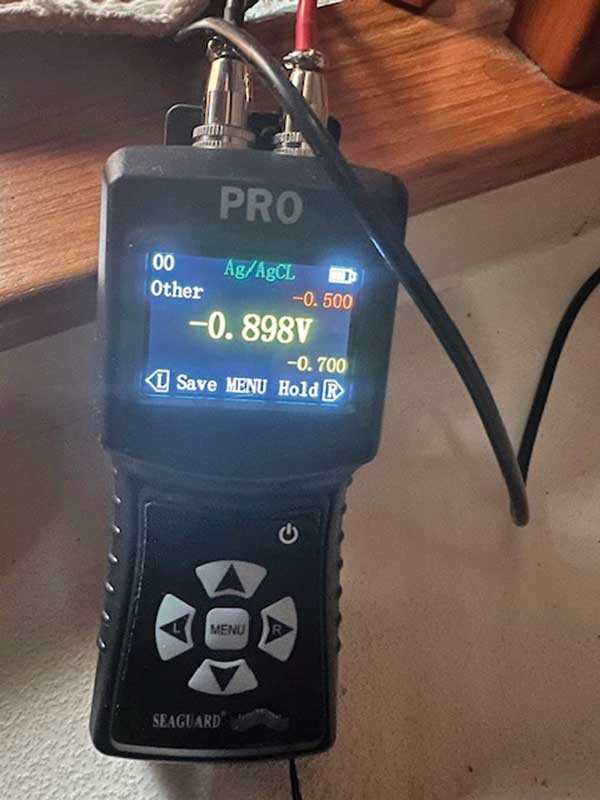Understanding the underwater metals on a vessel is a very important part of regular maintenance. We often don’t think about checking that these systems are operating correctly until the damage has occurred, or worse, a sinking event happens. In this article we will discuss understanding and installing anodes in order to avoid costly damage to your boat.

All vessels with underwater components need to have some system to protect the metal from corrosion (this will occur in any type of water solution). Metals have different electrochemical potentials when in contact with one another and form galvanic cells. The metal with lower potential in the galvanic cell will be anodic and will corrode. The same effect occurs in areas of different electrochemical potential in a single piece of metal such as a steel plate. Any vessel operating in fresh, salt, or brackish water is at risk from corrosion, and the effects can be costly. Stray current leakage is quite often cited as the cause of corrosion on all types of vessels; however, most of the time it can be traced to galvanic action.
As an owner, you should keep these things in mind for proper protection of metals:
- Conduct a visual inspection at haul-out of metals and anodes installed below the water line. Look for metal damage or excessive corrosion of anodes.
- Follow vessel manufacturers’ recommended anode installation and attachment instructions.
- At least once every few years, have the system tested for proper operation by a certified marine electrician or surveyor. Then make any repairs or corrections based on their report.
- Replace anodes each season with the correct material. This is cheap insurance!

Prevention of corrosion should be a regular part of your annual maintenance by installing the correct type of anode material for the waters you will be operating in. Make sure they are installed with proper conductive connection to the metals you wish to protect. Using the correct amount of anode material is important.
Essentially this is an electrical system, so using a corrosion tester to test the system for proper millivolt range will let you know of any potential issues to be corrected. Typically for fiberglass boats we want to be in -0.800V to -0,700V range. You can overprotect the system by adding more anodes than are necessary for the given amount of metals you are protecting; this can cause a haloing effect of copper-based bottom paints on the hull where paint comes in contact with metal parts, such as thru-hull fittings. Other considerations are not using copper-based paints for antifouling coatings where we have aluminum drive assemblies as this will cause major corrosion with that part.

Types of anode material to use:
- SALT water: aluminum is the best, or traditional zinc anodes.
- BRACKISH water: aluminum anodes.
- FRESH water: magnesium is the best anode.
Another thing to consider is where you keep your vessel. If at a marina dock, keep in mind that when you are plugged into the shore power, your vessel is now part of a larger circuit sharing with other vessel anode systems. When the vessel is plugged in through the ground system, this may have a negative effect on your anodes, causing them to corrode faster. Some things to do to help would be to unplug your vessel (if power is not needed) and to make sure you have a galvanic isolator installed on the shore power system, or even better, an isolation transformer which completely isolates the ground from the dock. If you have a galvanic isolator, it is recommended to have it tested from time to time to ensure it functions as designed.

If you suspect you have a stray current issue, it will be important to have it tested and corrected ASAP, as this will corrode metals fast and, depending on current leak, it can happen in days! Having seen thru-hulls corroded off in just a few days, causing the vessel to sink, I always recommend having it tested by a certified technician trained in this field.
I have found over the years that these anode systems are seldom maintained properly which leads to very costly repairs. It really deserves an inspection every year to ensure proper service. This is something a boat owner should become familiar with, and it doesn’t hurt to take a class on this subject.
About the Author: Erik Lostrom is a naval architect, third generation professional boat builder, and a graduate of The Landing School. He has worked in the marine industry for over 40 years and currently serves as the marine technology coordinator at Chesapeake College.